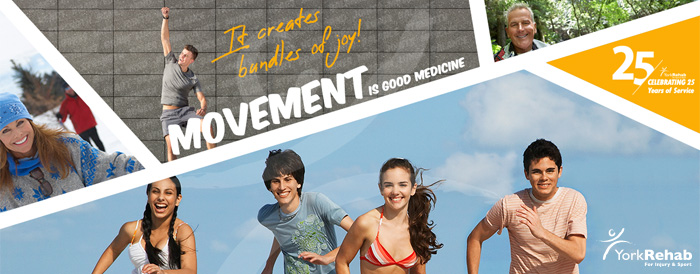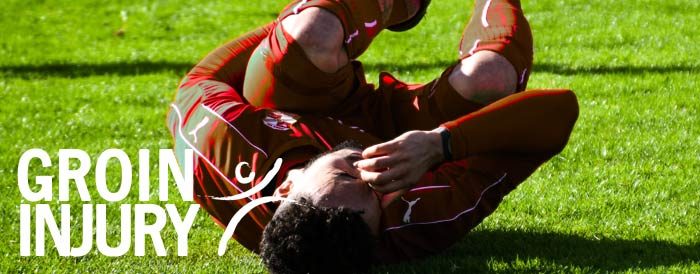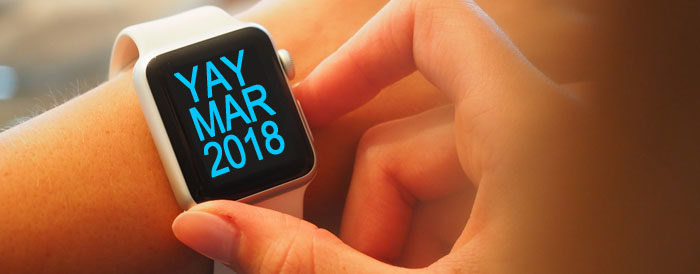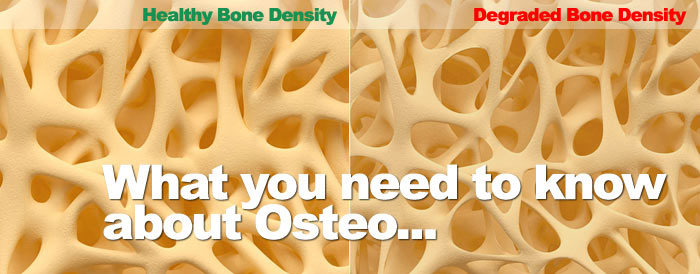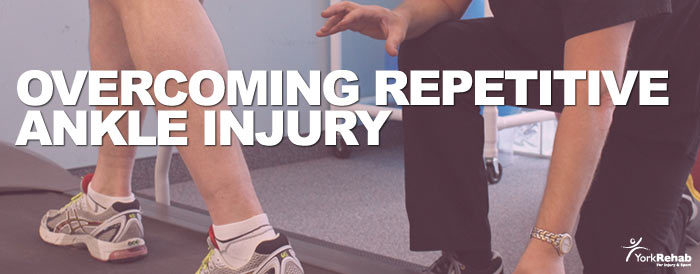Fitness & Excercise
Movement is Good Medicine
Note: if you are not used to regular exercise, before beginning any new workout routine, it is important to CONSULT WITH A DOCTOR OR HEALTHCARE PROFESSIONAL.
Moving is the best thing you can do for your mind, body and soul. It provides a level of healing, sustenance and wellness that few things can compete with. We encourage our patients to move not just as a path to recovery but to employ it as a sustainable way for developing/maintaining strength and for general mental wellness. This is not new information for our readers, but the general practice by most does not include integrating movement into our lives daily in a meaningful way. We know moving is good for us, so why do so many of us neglect to move?
We Take Movement for Granted
We miss it most when it’s gone. We tend to only remember that movement is a privilege when we get injured. We are reminded of the luxury of being able to walk when we sprain an ankle, injure a knee or pull a hamstring. Or how important fingers are, only after we sprain one of them. Or how dependent we are on our back when strain or exertion from the day before makes it hard to sit up to get out of bed. There are countless instances where we are reminded of how important our bodies are not just to compete in sport but for everyday living.
What’s at Stake?
One thing is certain, the less we move now, over time than can translate into a decrease in our ability to move comfortably for everyday living. Everyday things like getting up from a chair, bending to pick up a box, putting on your socks, walking up steps, going down onto the floor. Whether you decide to move more or move less the effects will compound over time. Just like compounding interest, a little can grow into a lot. Investing in daily movement now will compound over time into building strength, heart health, improved mental wellness, lowering stress, minimizing joint pain, weight management, improved sleep, better balance and more brainpower. The reverse also holds, less movement will create the reverse effects with the same benefits just shared. And the effects can sneak up on you unexpectedly – coughing too hard throws out your back, you pull a hamstring running to catch a bus, etc.
So How Can We Move More?
If you’re interested in adding more movement into your day, be deliberate and create a plan. Start with figuring out what your goal is:
- Strengthening and muscle building
- Weight-loss
- Mental Wellness
- Improved Health
- Recovering from injury
- Improving or sustaining general health
Once you’ve identified your goal(s), it’s time to design a plan. Planning includes what type of activity you are going to do when you are going to do it, and whether you need some support (a friend or a trainer). The type of activity you decided on should be in alignment with your goal. For example, if you’re interested in sustaining your fitness level, 30 mins of daily activity can do the trick. But, if you are interested in strengthening or losing weight, you’ll need a larger time commitment (approx. 60 – 90 mins), at least 3 times a week.
To Build a Habit of Movement…Start Simple
If incorporating more movement/activity into your day, is a new thing for you start with simple steps. For example, don’t set a goal of running in a marathon in 3 months and schedule 30-minute runs 5 days a week. Instead, begin with basic movement like a 25-minute brisk walk every other day and build from there. If you prefer to walk inside you can check out Walk at Home by Leslie Sansone on Youtube. If building strength is the goal, it won’t be safe to start with 60-minute workouts lifting heavy weights. Begin with a 10 to 15-minute workout relying solely on body-weight – you can YouTube “HIIT workout”, “Calisthenics”, or “Full body workout, no equipment” for ideas and motivation (there are many videos to chose from).
Tips to Help You Succeed
- Each day that you complete your activity, note it on your calendar. You’ll be able to turn to it for motivation once you start to see the checkmarks adding up.
- Dress for success. The right attire can make you feel good and encourage you to stay active.
- Be comfortable with uncomfortable. As you transition into new activity and challenge your body, it may not always be enjoyable – no problem, understand that’s normal and embrace a bit of discomfort. (Note: if you feel pain, stop the movement and consult a healthcare provider).
- Schedule your activity. Give yourself a specific time of day that you plan to move and commit to it.
- Remember the why. Write down your goal and the reasons why so that you can refer to your notes from time to time for added motivation and encouragement.
Good Luck as You Work to Move More
Remember movement is good medicine. So, use it so you don’t lose it.
Disclaimer: Understand that when performing any exercise or exercise program, there is the possibility of physical injury. If you engage in any activity or exercise that’s referenced on the yorkrehab.com website, you agree that you do so at your own risk, are voluntarily participating in any such activity, assume all risk of injury to yourself, and agree to release and discharge York Rehab from any and all claims or causes of action, known or unknown, arising out of any content provided or referred to. The information provided on yorkrehab.com is not intended to be a substitute for medical guidance, diagnosis or treatment. You should not delay pursuing medical advice because of something you have read on this website. York Rehab (yorkrehab.com) is not responsible or liable for any advice, course of treatment, diagnosis or any other information, that appears throughout yorkrehab.com. If questions arise from any content that appears or is referred to on yorkrehab.com you are encouraged to consult a medical professional such as your doctor.
Groin Injury
Groin injuries are a common injury amongst active people, as well as those unlucky enough to strain the area by falling, tripping, or getting their leg caught on something. It is usually characterized by pain along the inner thigh where the muscles are thought to have been over-stretched. It also has a reputation for being a “difficult” injury to recover from, although this reputation is somewhat undeserved. Sometimes the nature of the injury is incorrectly assumed from the beginning, which can lead to ineffective treatments and prolonged pain. Groin pain following a strain can result from several different injury mechanisms, each of which requires a different management approach.
Groin or inner thigh pain can be a manifestation of a hip joint problem. The hip is a ball and socket joint that is lined with cartilage and surrounded by other supportive soft tissue for protection. Sometimes when the groin is “strained”, the soft tissue can become pinched and cause pain. The resulting pain comes from compression of this tissue by normal hip movements. Usually, though, the hip can be “unlocked” by moving it in the proper direction, which can be found under the supervision of a well-trained physiotherapist, and relief of pain will quickly follow.
Another possibility is that the ligaments and tendons of the groin take the majority of the force rather than the muscles themselves. These tissues have notoriously poor blood supplies and so don’t receive the nutrients and support needed for good quality healing. Therefore, they can remain painful for weeks or even months if the proper intervention is not undertaken. However, they are quite responsive to tension or resistive forces, and with a specific exercise program, they can be remodeled slowly to decrease the pain and regain the strength. This does require discipline, as the changes will occur slowly over a number of weeks, but should ultimately result in recovery.
When a groin strain primarily affects the muscular tissues, which is what most people assume groin injuries to be, healing will usually proceed over a number of weeks, because of the aforementioned good blood supply. As long as the muscles are not over-stressed during this healing period, and movement and strength are gradually regained as the symptoms allow, the recovery will proceed uneventfully.
For all the different injury mechanisms listed above, once full movement and strength of the area have been attained, treatment will focus on recovering a level of function required by the person’s work or athletic activities. For example, a physiotherapist can guide a tennis player to safely progress and return to running, cutting, lateral movements, and lunging, all of which are necessary components of the sport.
In summary, the crux of the matter with groin injuries is to determine what kind of problem it is. To say you have a “groin injury” on its own does not say enough for a healthcare professional to be able to treat it effectively; they have to be able to understand it on a deeper level to direct the appropriate treatment. The physiotherapists at York Rehab possess the assessment skills necessary to diagnose such injuries and help you to recover as efficiently and effectively as possible.
March…The Perfect Time for Resolutions
Most would not argue with the statement that 80-90% of people who start a New Year’s resolution at the beginning of January are probably not going to make it to February. Most resolutions are meant to improve people’s lives and make them happier, so it’s sad that so many people give up on their dreams so prematurely. There are varying reasons that can explain the failure to keep resolutions but some of the more common ones are connected to setting too many goals at once, making your goals too general or making them too big. Whether you’ve consciously or unconsciously abandoned your resolutions after only a few weeks of trying, the good news is you don’t have to wait until next January to make another attempt. March is the perfect time to pick yourself up, dust off and give it another go. Here are a few things that can help you make your second shot at your desired life change more permanent.
First, Look at the Data
If you’ve failed at keeping up your January resolutions, you’ve now accumulated useful data. Between when you started and when you quit, you can likely pull some information that can show you what worked with your attempt and what didn’t. Taking a closer can help you to figure out what things you can do differently so that you don’t repeat failure a second time. For example, maybe your resolution was to start exercising regularly (5 days a week), but you were only able to exercise 3 evenings the first week, then 1 evening each of the next two weeks. That data would show evening exercise didn’t fit well with your schedule. So on a second attempt at the resolution, exercising first thing in the morning would be a better plan.
Figure out what’s REALLY Important to You
People sometimes decide on resolutions for superficial reasons and a deeper look can uncover that a particular resolution may not really matter to you. You might have a resolution to stop eating chocolate – but upon closer inspection you discover that what you really want to do is start eating healthier as a whole. Deciding to focus on only eliminating chocolate from your diet wouldn’t yield you the type of results you want because you could simply replace one less than ideal food choice with another.
Be Specific with Your Goal Setting
Break down your goal into specific parts so you know exactly what you need to do, and when you plan to do it. The wrong way to approach a resolution like incorporating more exercise into your routine would be to say “I’m going to exercise more this year”. When you’re that vague, it allows you the flexibility to interpret “…exercise more…” any way you want – i.e. I exercised twice this month, hopefully I’ll exercise more next month. It may not unfold exactly that way but you get the gist. Instead, be specific on how you are going to integrate exercise into your routine, i.e. I’m going to do yoga four times a week on Mon, Wed, Fri and Sat first thing in the morning. By listing specific steps, you’ll know when you’re not keeping up and that you might need to address something in order to stay on track with your goal. Choose the SMART method for goal setting:
Specific
Measurable
Achievable
Relevant
Time-based
Don’t Do Too Much at Once
There’s an endless list of things one would want to change about themselves but trying to make many changes at once is usually difficult. Start with one goal and once you have built some momentum with maintaining it, only then should you consider working on another goal at the same time.
Create Accountability for Yourself
Don’t keep your goals hidden, share what you want to accomplish with someone close to you. You’ll be more committed when you know someone is watching. And invite them to inquire about your progress. When you know someone is going to check up on you, it’s added incentive for you to keep up with your efforts so you have results to communicate when you’re asked: “How are things going?”
Measure and Celebrate
Keep track of your progress, whether by journaling or marking progress on a calendar. A visual record of your progress helps you maintain momentum because it allows you to see how much you’ve already done. And identify milestones so that you can have mini celebrations along the way. If you need to lose 20lbs, it’s much better to celebrate each time you lose 5 than waiting to celebrate only after you’ve lost the full 20.
And Finally, Lighten Up!
Making a change is not easy, especially if it’s a significant change. There will be moments of discomfort and times when you just won’t do what you are supposed to do. If you have a moment of weakness and stumble, don’t use that as an excuse to quit – no one is perfect, failure along the way is normal. Also, accept that your goal won’t always be exciting and fun to tackle and that you may often not want to complete your task(s). Most of the time you probably won’t feel like doing what you should be doing – recognize that motivation won’t always accompany you. Despite the absence of motivation, do what you need to do anyway. Focus on developing the simple habits that will get you going, i.e. if you need to get in a morning run – just focus on getting your shoes on, and once those laces are tied what follows will be automatic.
Osteoporosis – What You Need to Know
Osteoporosis is a health condition that affects bones, leading to bone thinning and loss of density, ultimately affecting their structural integrity and leading to increased fracture risk. It can occur at any age, although is more common as age increases; 1 in 4 women and 1 in 8 men over the age of 50 are affected by it. It is often called the “silent thief” because it can be present without any active symptoms. Its presence can be confirmed definitively only by a Bone Mineral Density test, which is a special type of X-ray.
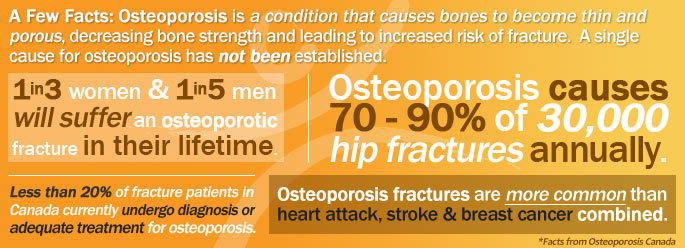
No single cause of osteoporosis has been identified. As we develop and grow through childhood and adolescence, we continue to build and “bank” bone until the age of 30. The more that we build bone during this critical period, the greater defence we have against the development of osteoporosis later in life. Bone “likes” to be exposed to regular, varying stresses to adapt and grow stronger; for example, playing soccer, which involves varying amounts of jogging, sprinting, jumping, and kicking, is an example of good stress. This means that everyone should be active from a young age and continue to remain active as they grow older to minimize the risk of osteoporosis, amongst many other health conditions – unfortunately this seems to be far from the norm.
The group at greatest risk of developing osteoporosis is post-menopausal women over the age of 50. While both men and women begin to naturally lose bone starting in their mid-30s, women lose bone at a much greater rate as they approach menopause – about 2-5% per year. This risk is even greater if they are physically inactive. This is because bone is a very active tissue with lots of turnover, the misconception is that we tend to think of it as a fixed structure. There are specialized bone cells that deconstruct it, mainly to access stored calcium for numerous bodily functions, and other specialized cells that reconstruct it as it adapts to the loads that we put on it. If we don’t put enough stress through it by moving and exercising, the reconstructing cells are insufficiently stimulated and there is a gradual loss of bone.
As mentioned above, the risk for fracture is much higher when osteoporosis is present. Areas that are most common to fracture are the spine and hip. Usually we would think that a significant trauma such as a hard fall or a car accident would be necessary to cause a fracture, but in osteoporosis much lesser forces are needed; even repetitive bending can be enough to cause a spinal fracture. Compounding this problem is that because people with osteoporosis are often less active, they do not have the same balance and strength as active people, and so are more prone to falls.
What can be done to counteract osteoporosis, or prevent it from happening in the first place? While medical interventions such as supplementary calcium and Vitamin D are important to ensure bones have the nutrients they need to remain strong, one important way to help manage your disease is through exercise. Just like muscle, bone adapts to the loads applied to it and become stronger. Our Newmarket Physiotherapy clinic has a specialized exercise program called Osteo-Circuit for those with osteoporosis or low bone density. You will be assessed by a physiotherapist to determine your suitability for the program and what your customized exercise plan should be. Inquire about the next 6 week program offered at our Newmarket Physiotherapy Clinic. Here’s to better and stronger bone health – you can do it!
Overcoming Repetitive Ankle Injuries
A common injury for people involved in sports such as soccer, tennis, squash, or running is an ankle sprain. Many athletes and weekend warriors alike have experienced this injury, often multiple times, and may rely on using a brace for support to prevent re-injury or be forced to cut back on their participation due to recurring injury. It is possible to minimize the recurrence rate of this injury by seeing a qualified physiotherapist who can assess for and address the following limitations that are common in people with repetitive ankle injuries.
Some people who have had a long history of ankle injury have range of motion limitations. What can happen is the ankle swells following the sprain, and it gradually recovers, but the scar tissue that forms to rebuild the injured tissue does not get adequately stretched. This is how a stiff ankle can develop, and playing sports with this movement loss can lead to another injury quickly. A physiotherapist can identify these limitations and prescribe the proper stretches to recover as much mobility as possible.
Secondly, following the recovery from an acute (within 6 weeks of injury) ankle sprain there might not be any residual pain, but often there is a lingering weakness. Because the ankle feels free of pain the athlete is compelled to return to their sport, neglecting the strength deficits that are present. Depending on the sport, this might manifest as decreased endurance, overall strength, or explosive power such as in jumping sports. This can be remedied by regularly performing the appropriate exercises specific to your sport, exercises which can be determined by a physiotherapist.
A hidden impairment that an athlete may not notice after an ankle injury is decreased proprioception. This refers to the “position sense” of your joints and ligaments, similar in a way to other senses such as vision and smell. There are sensors embedded in these tissues that give the body feedback about where it is in physical space, and we rely on this sense to maintain good balance and stability during weight-bearing activity. After an ankle sprain, we often lose some of this sense, but it can be readily retrained much like muscle strength can. Specific balance exercises can be done to regain this sense, with progressions to sport-specific activity.
Building on that last point, before returning to your activity is considered, an athlete should be able to perform the necessary tasks involved in the activity. For example, a soccer player should be able to sprint, change directions quickly, kick, and dribble a ball. Often the speed at which these activities can be done following an ankle injury is much less than in normal conditions. Agility exercises and plyometrics, which are a type of exercise involving explosive movements such as jumps and sprints, are essential here. Regaining these skills is crucial to minimize the risk of long-term ankle injury recurrences.
To summarize, if you have had trouble with repetitive ankle injuries, you should consider seeing a physiotherapist who will assess to see if any impairments discussed above are present and design the optimal program for you to address them. Frequently the solution to the problem is relatively simple; it just takes some diligence to stick with the program to see results. Instead of worrying about your ankle every time you return to activity, wouldn’t it be nice to pivot, jump, sprint or whatever you do with confidence? You can make that a reality following an individualized physiotherapy regimen to help with your recovery, so you can get you back in the game as quickly and safely as possible.

